Power supply frontend DPS5015 50V/15A, charts
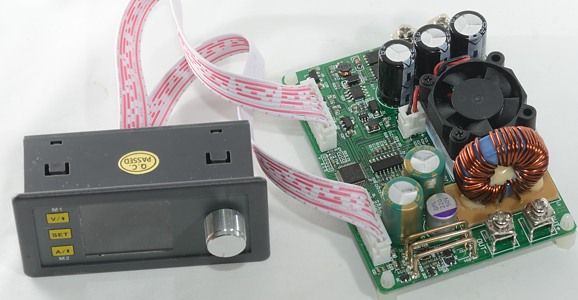
This is all the charts without many comments, for the review see here.
Load sweep
The first voltage is input voltage, the second voltage is output voltage.
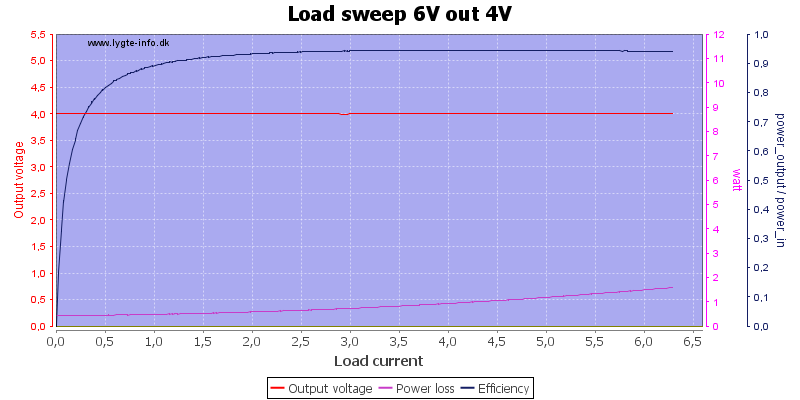
With this low input voltage the output turned off at about 6A
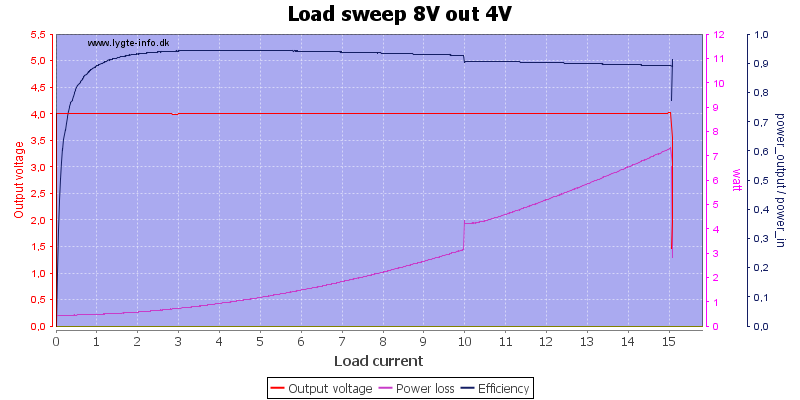
The jump in power consumption at 10A is because the fan turns on.
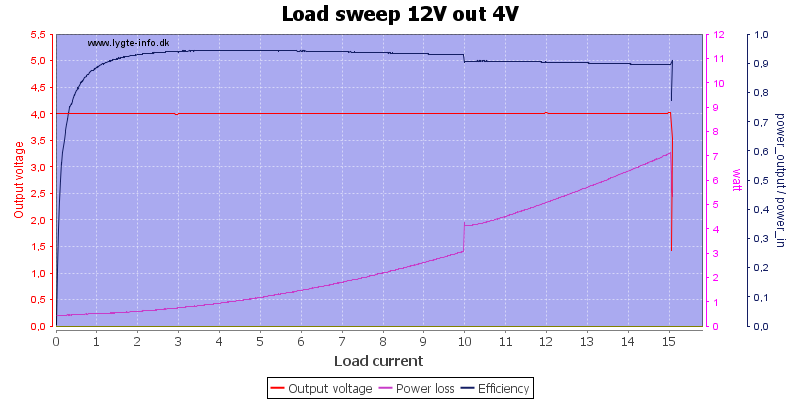
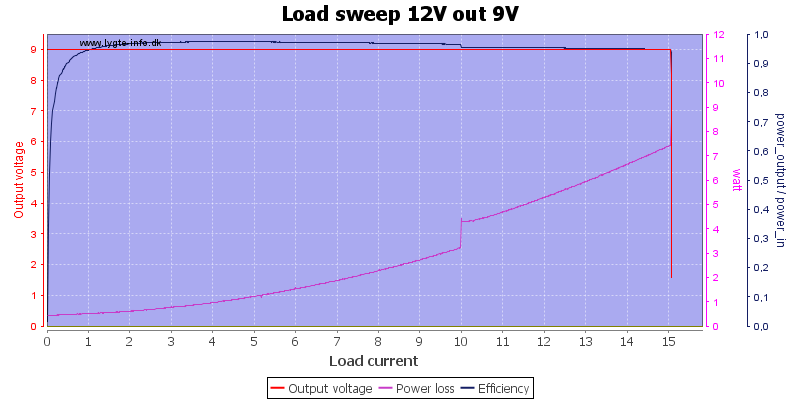
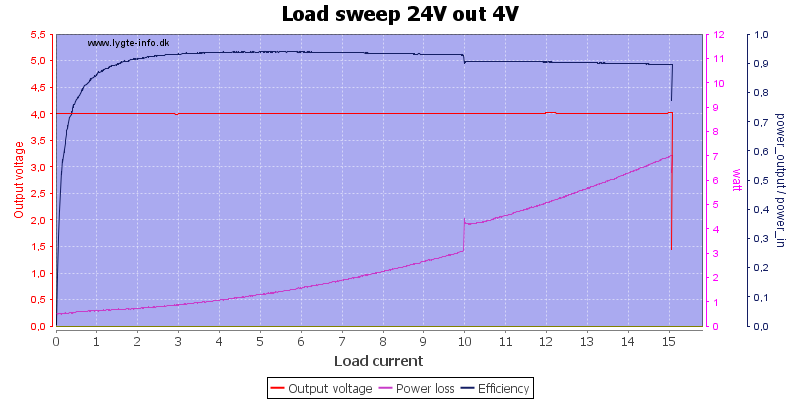
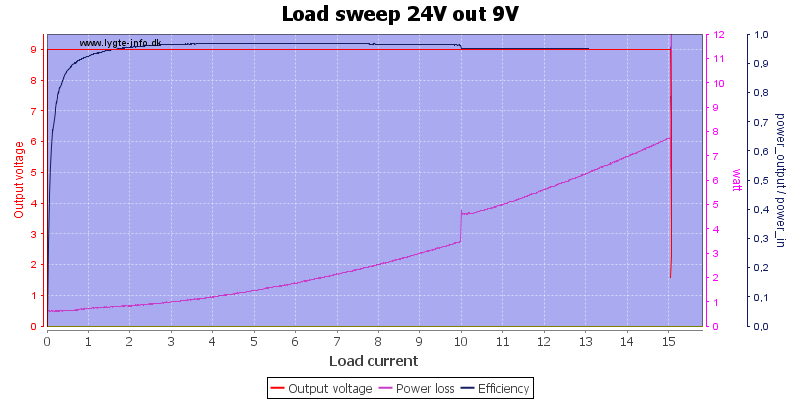
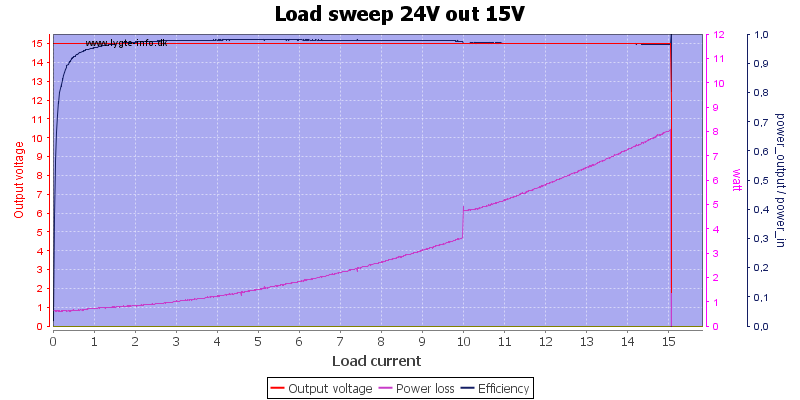
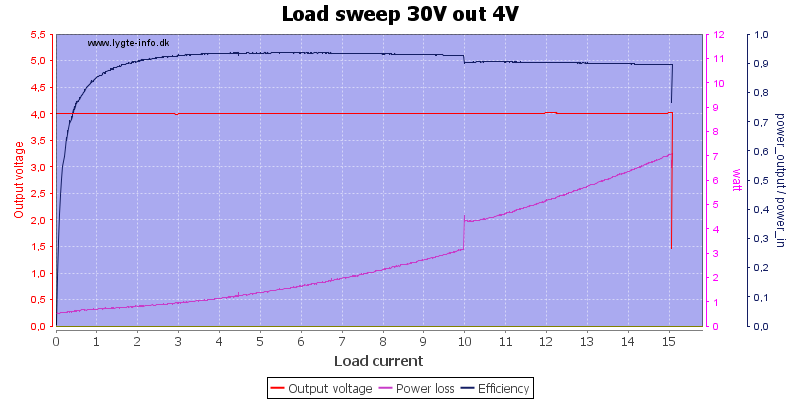
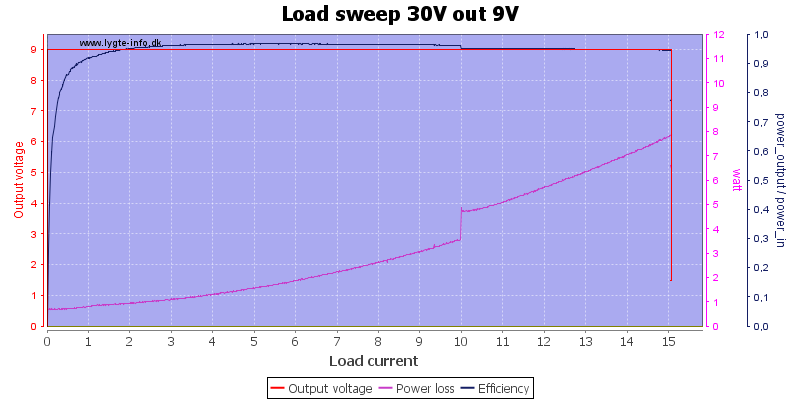
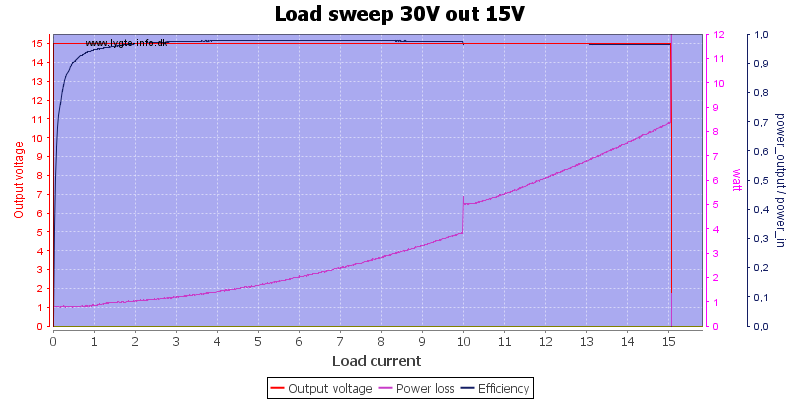
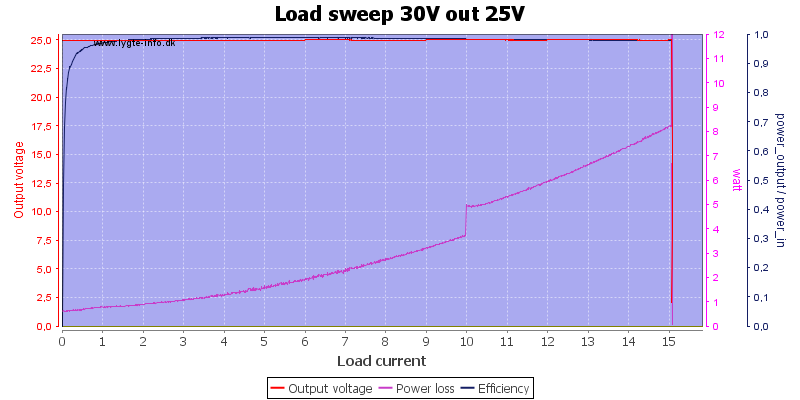
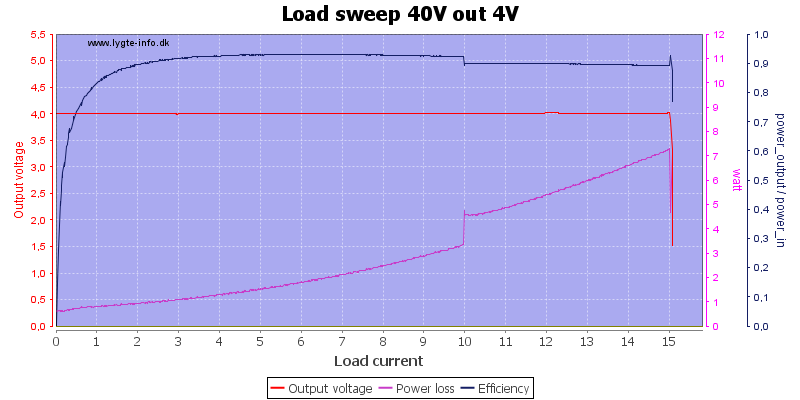
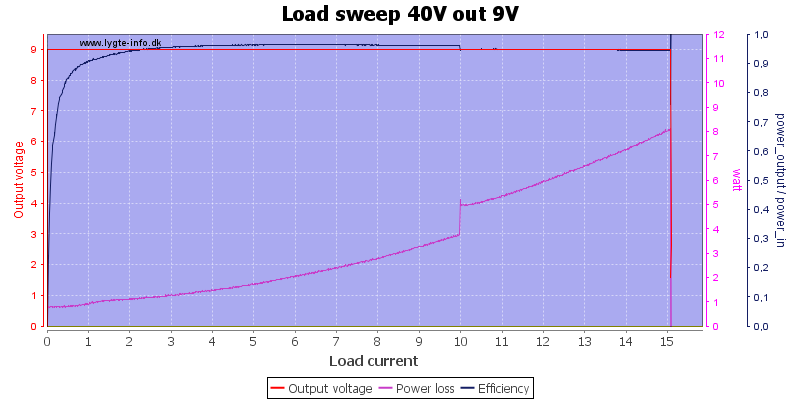
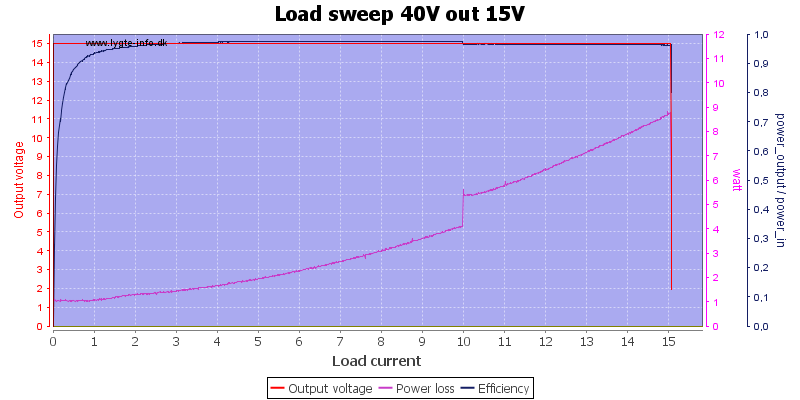
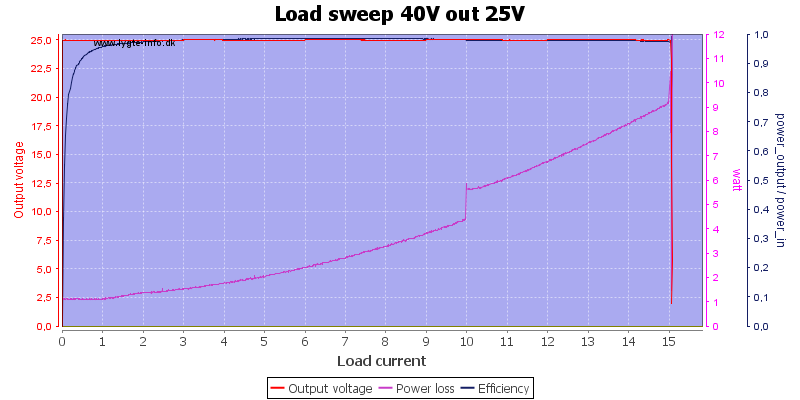
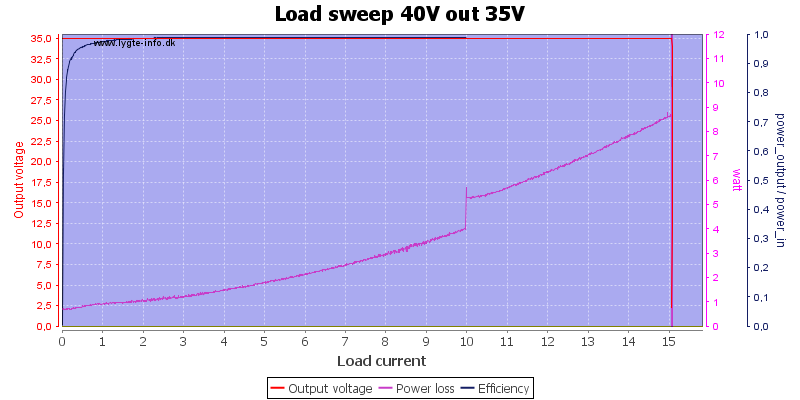
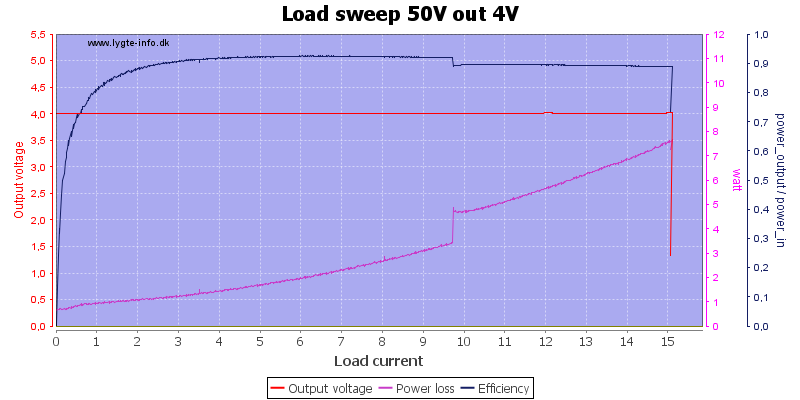
The fan can also turn on below 10A if the heatsink gets warm.
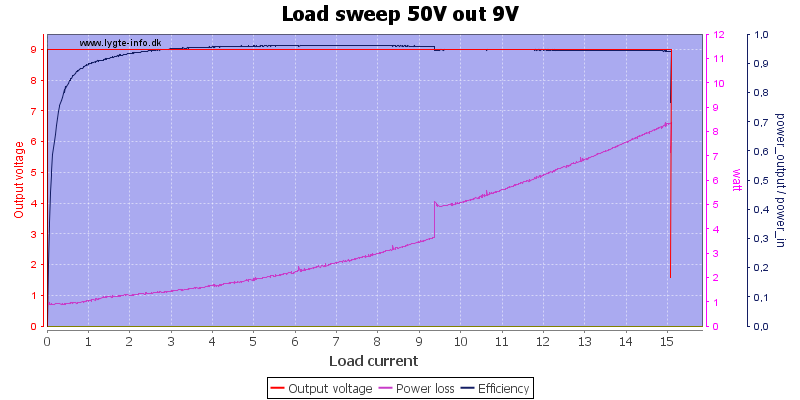
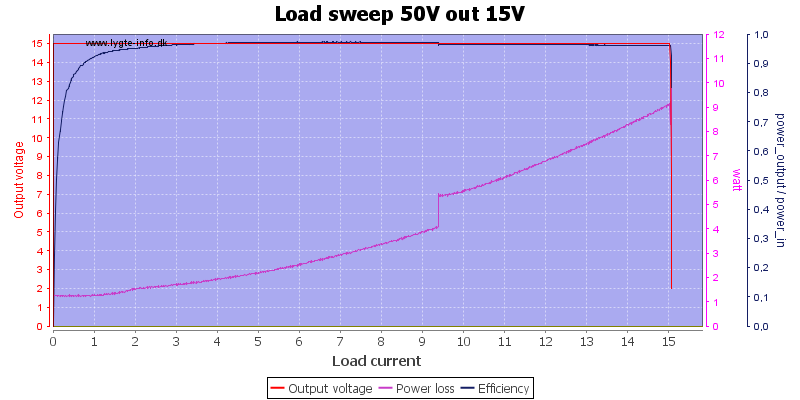

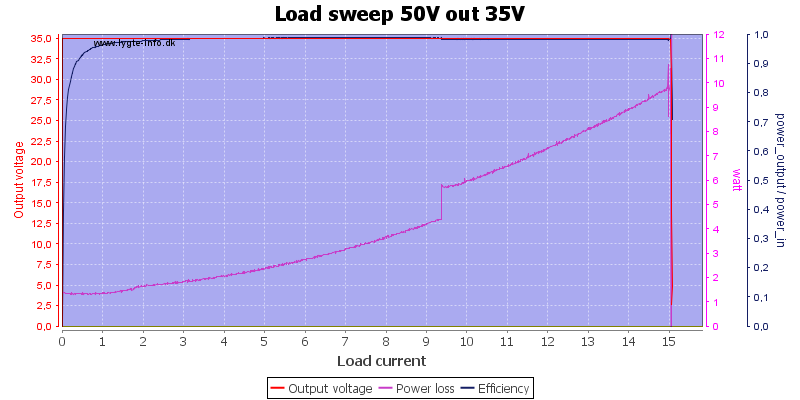
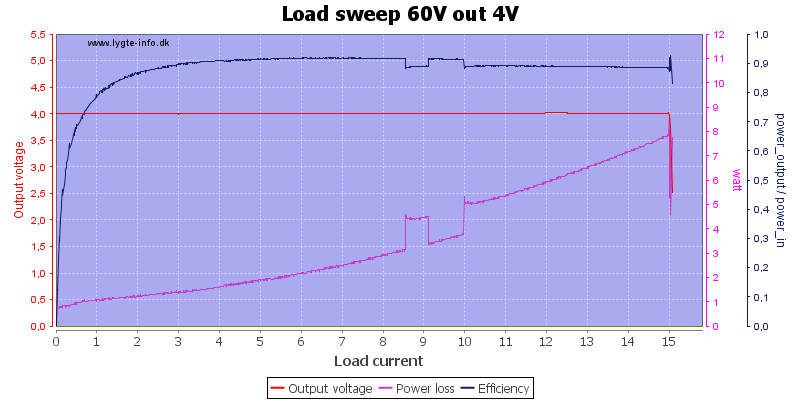
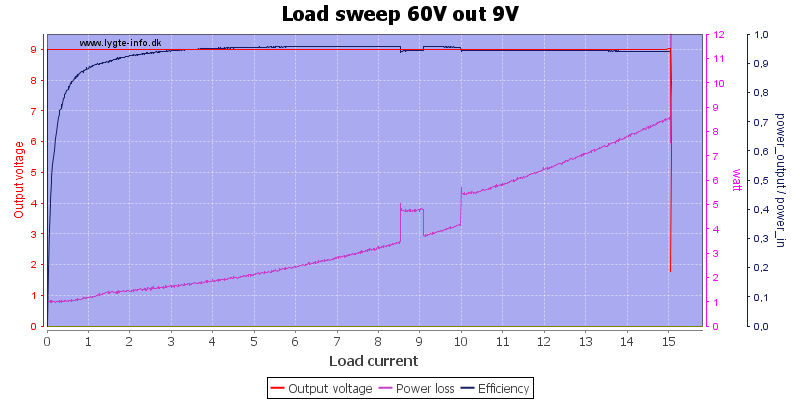
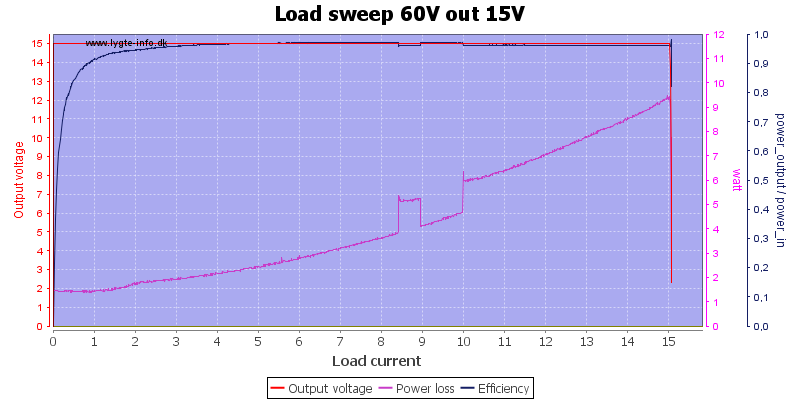
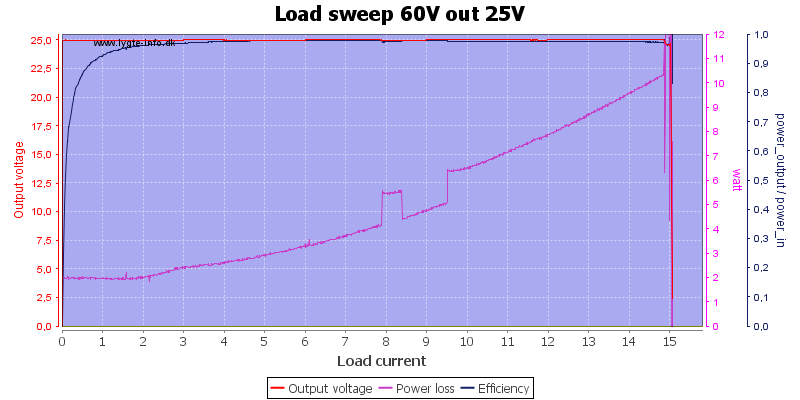
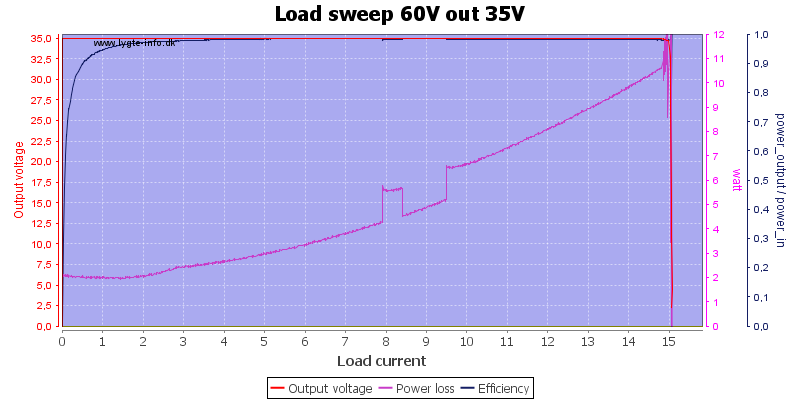
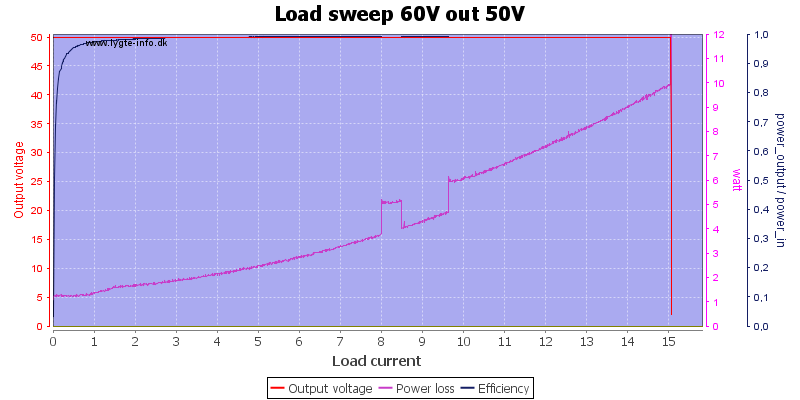
Load Test
These test are done with fixed input voltage, fixed output voltage and constant current. The purpose is to see if the output stays stable when the power supply warms up.
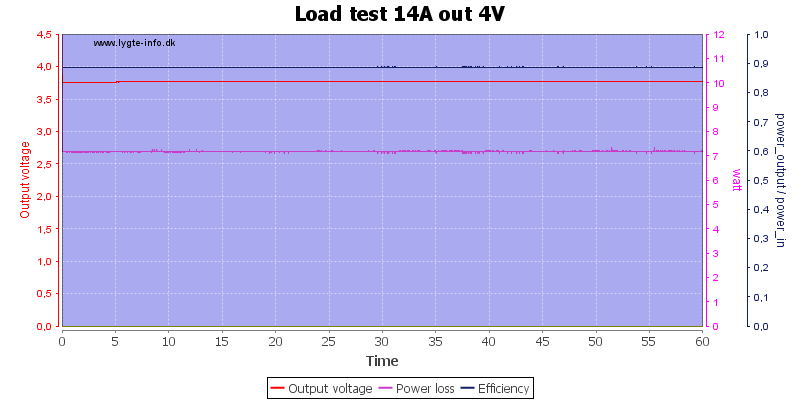
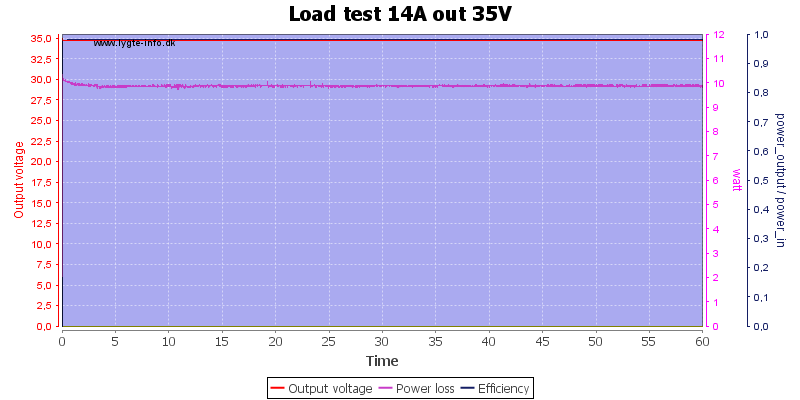
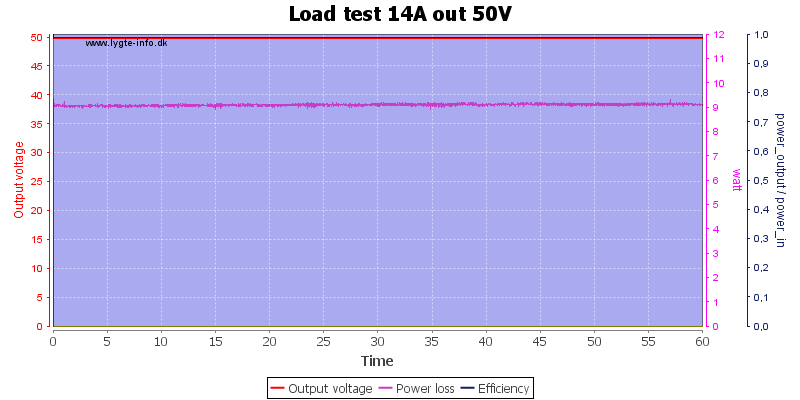
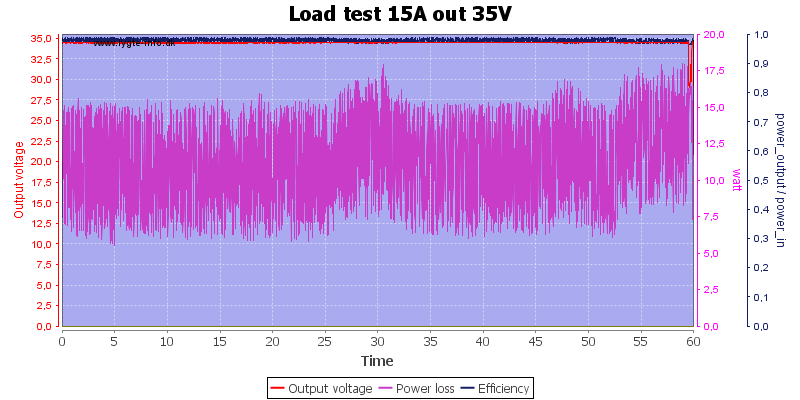
The 15A load is too close to the current limit, output voltage is maintained, but is fairly noisy.
Voltage sweep
These test are done with constant output voltage and output current. The input voltage is varied to see how the efficiency varies and how low input voltage it can handle.
Each test includes two charts: one with input current and one with output voltage and power loss/efficiency
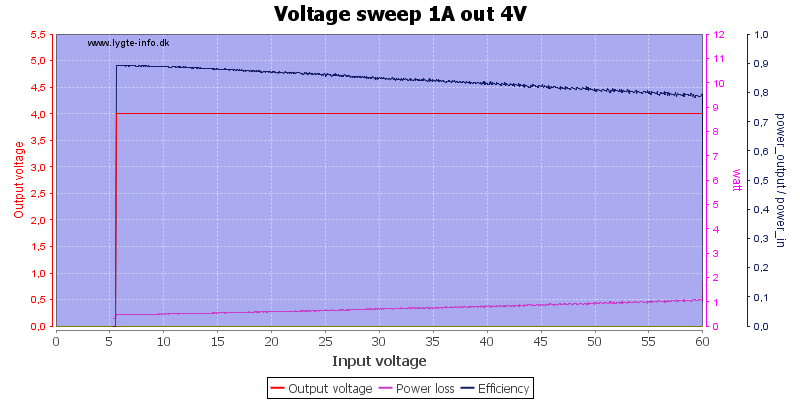
The specified minimum voltage is 6V and it turns off just below that. At 4 watt output (1A at 4V) the efficiency is fairly low, because the power for the regulation and display is a significant part of the input power.
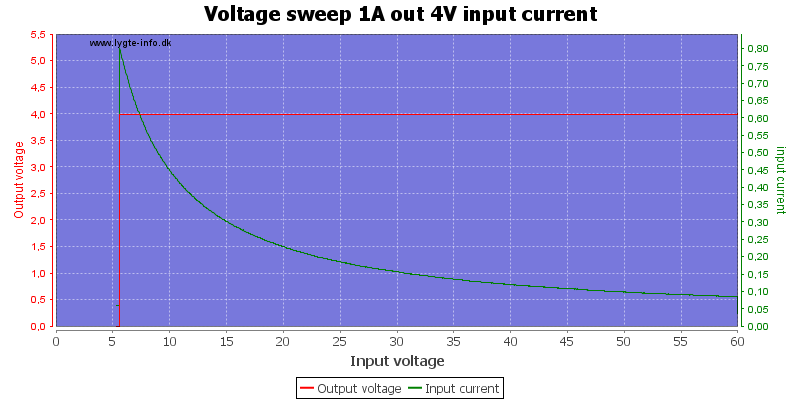
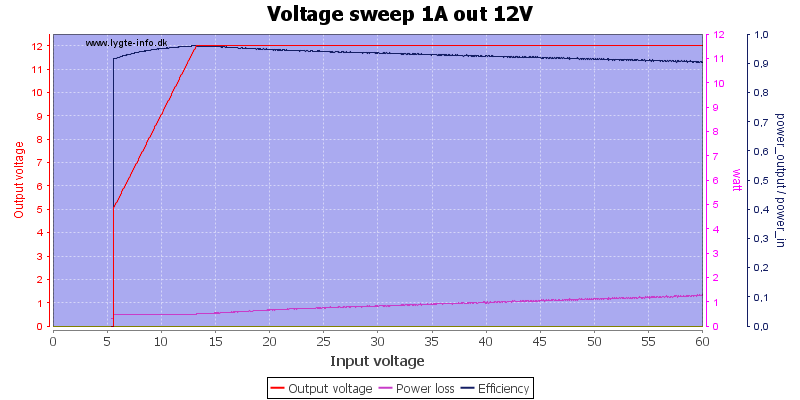
When the input voltage is close to the output voltage, it cannot maintain the output voltage.
The volt reading will show the lower output voltage, but there is no warning (Like a flashing voltage readout).
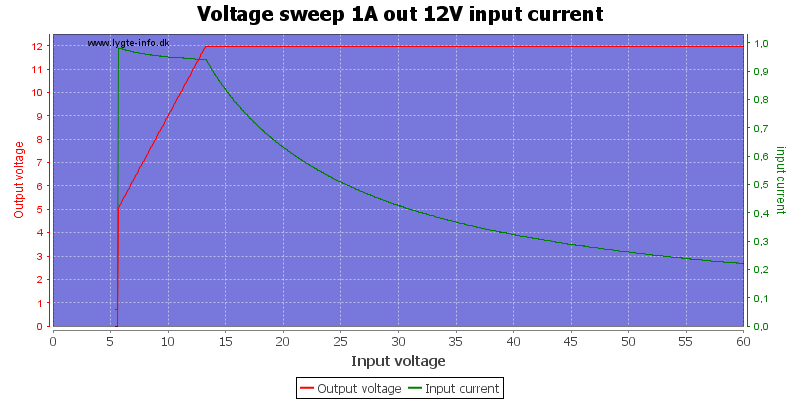
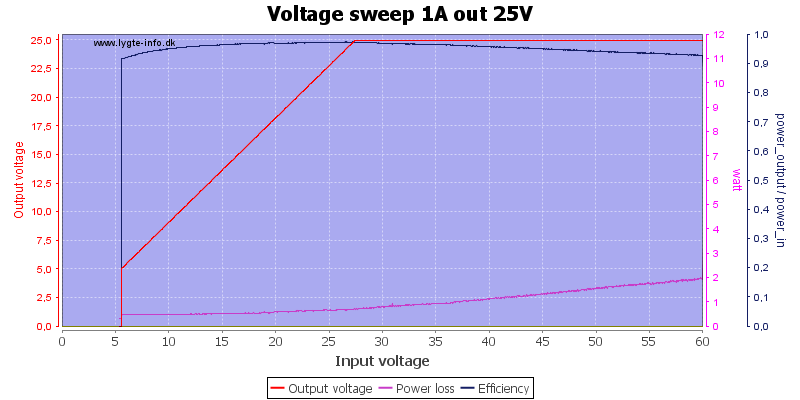

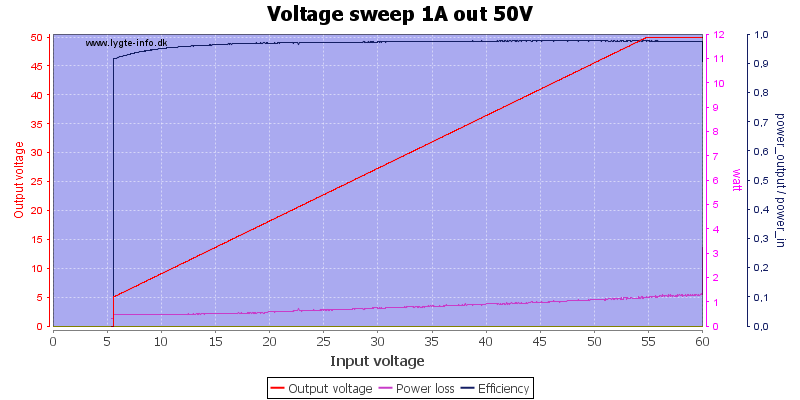
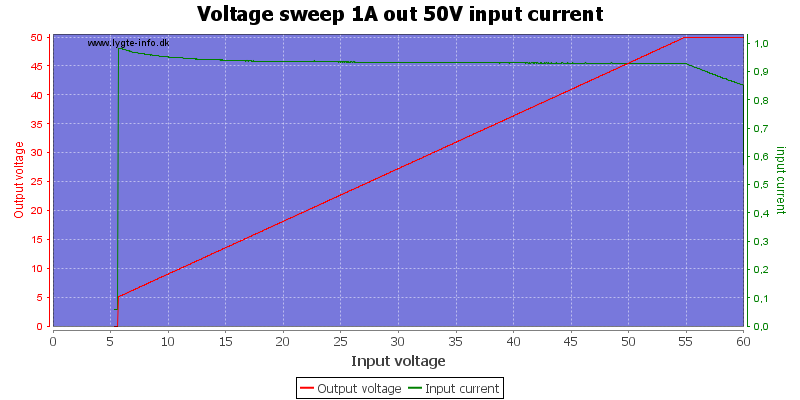
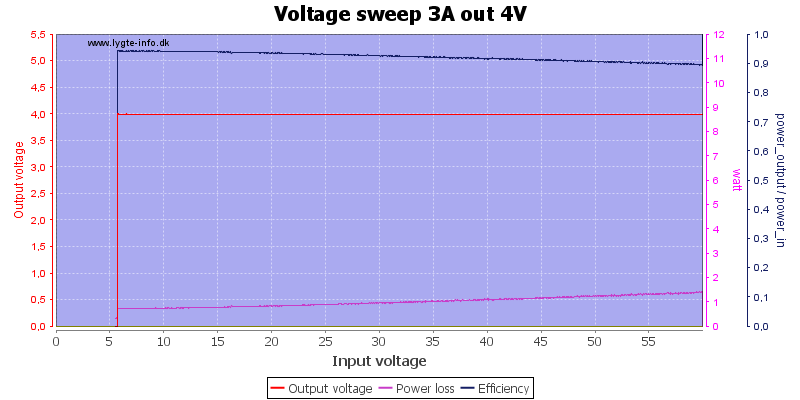
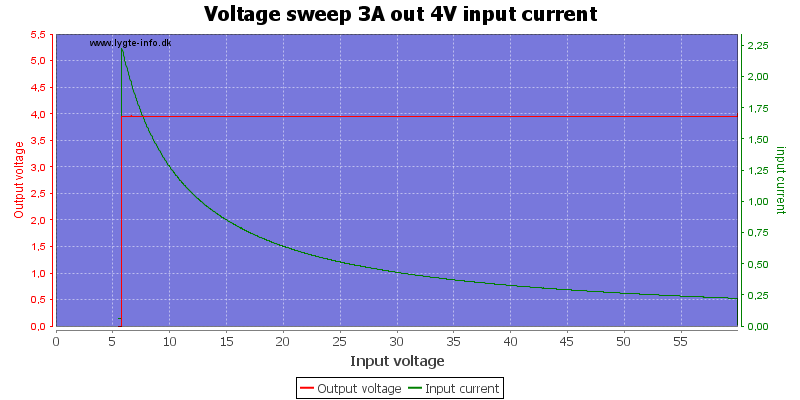

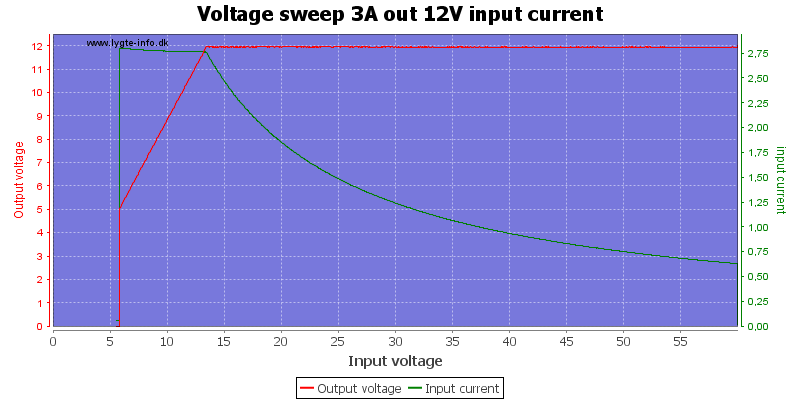
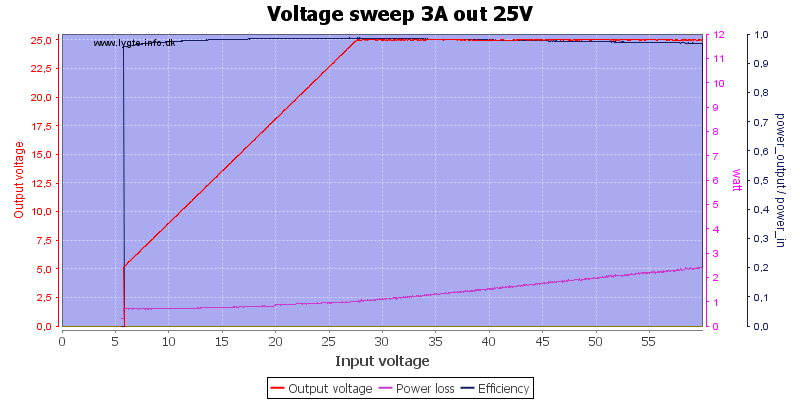
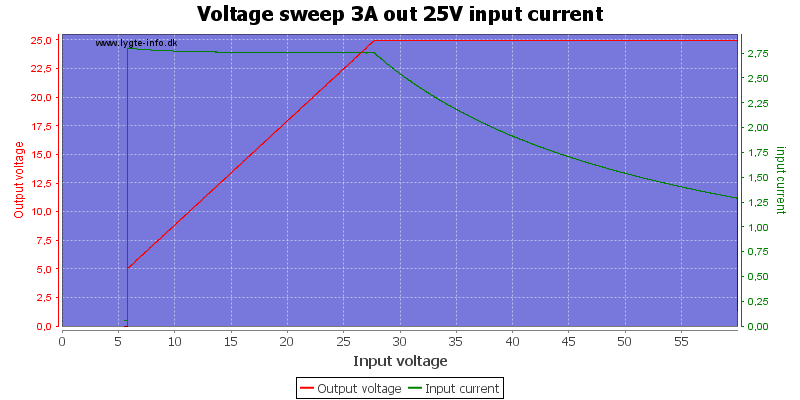
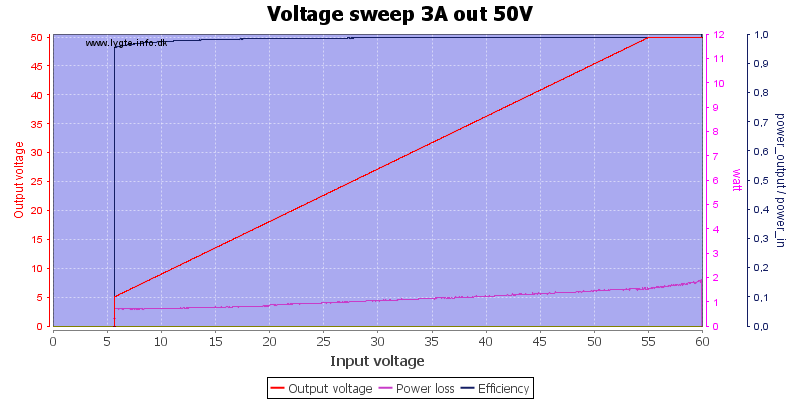
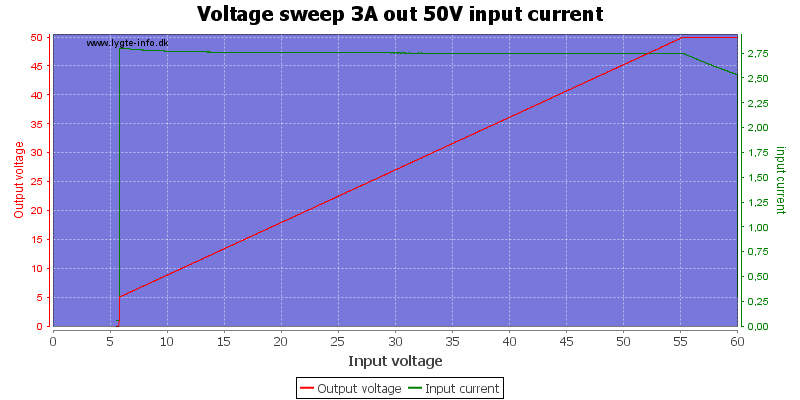
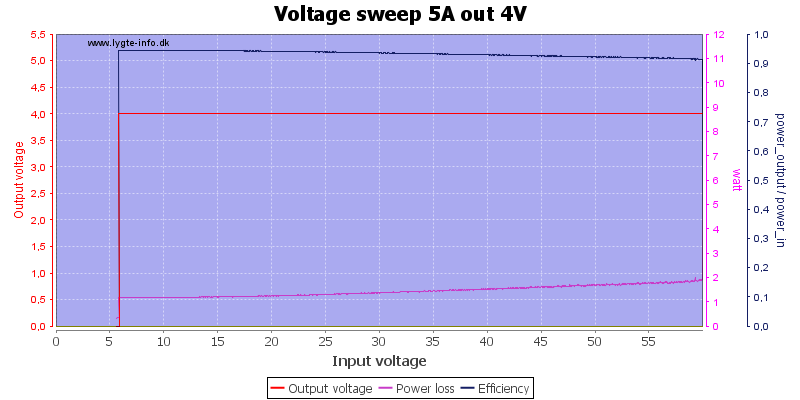
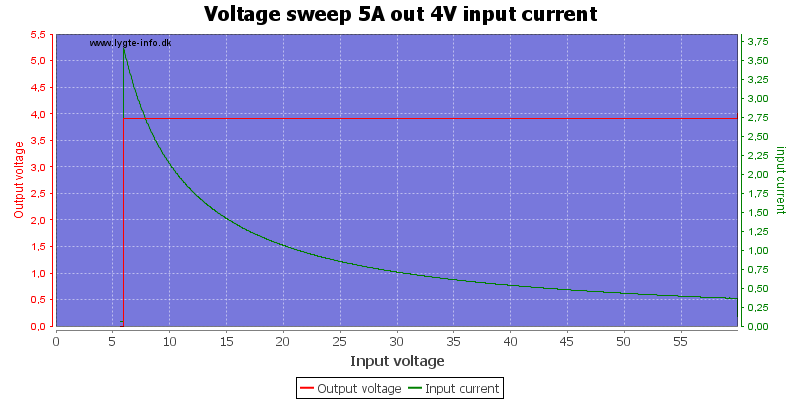
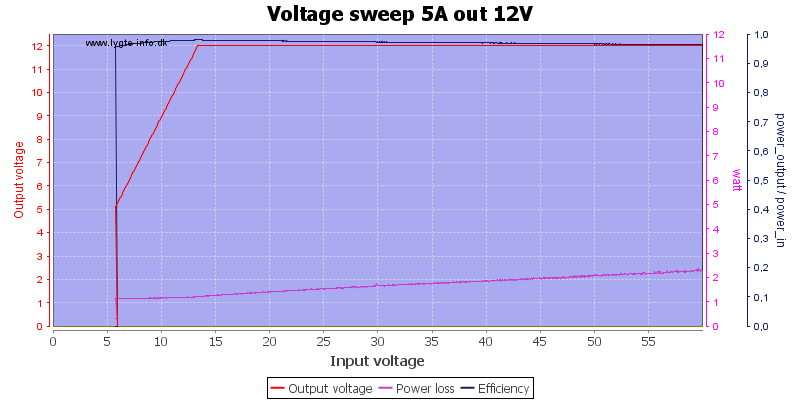
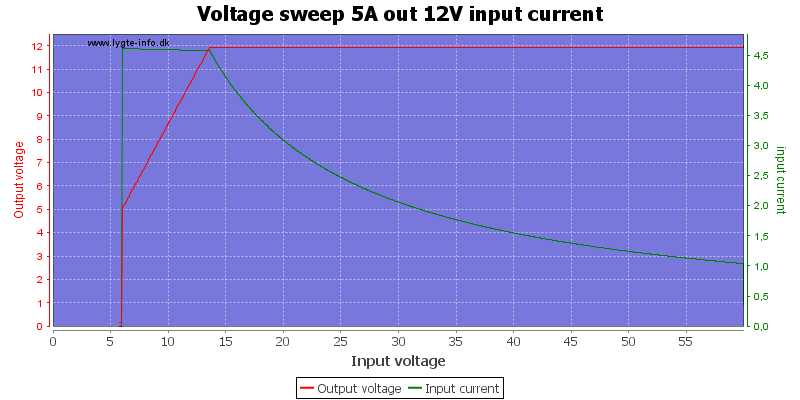
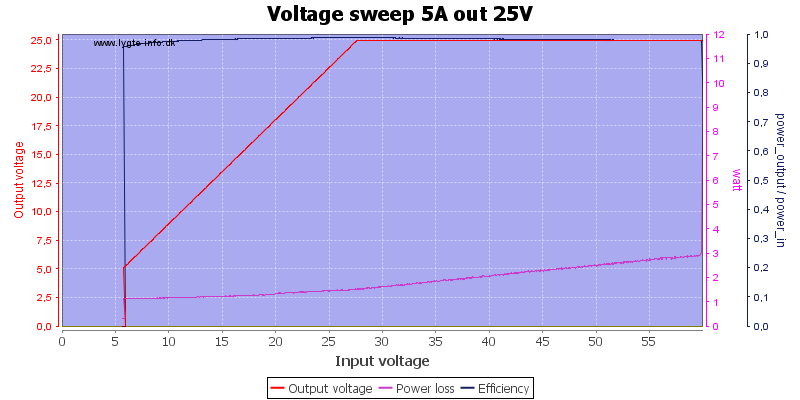
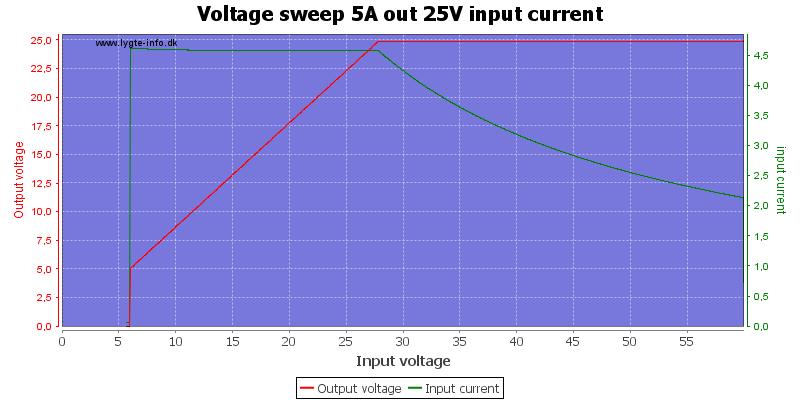
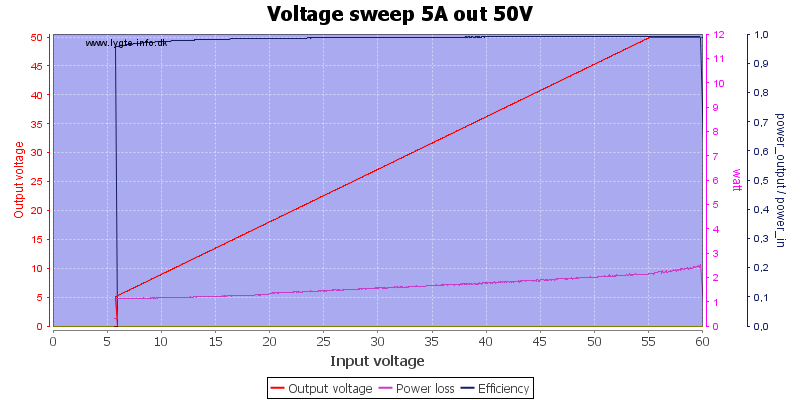
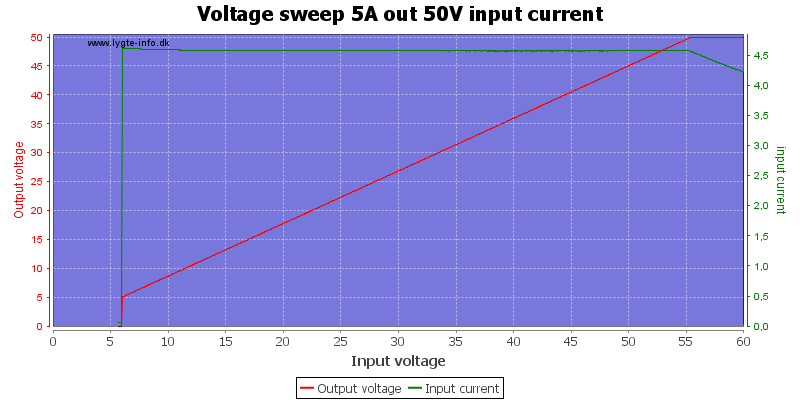
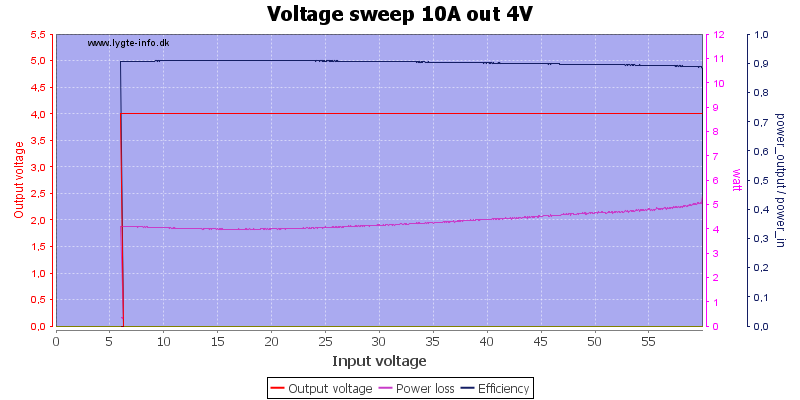
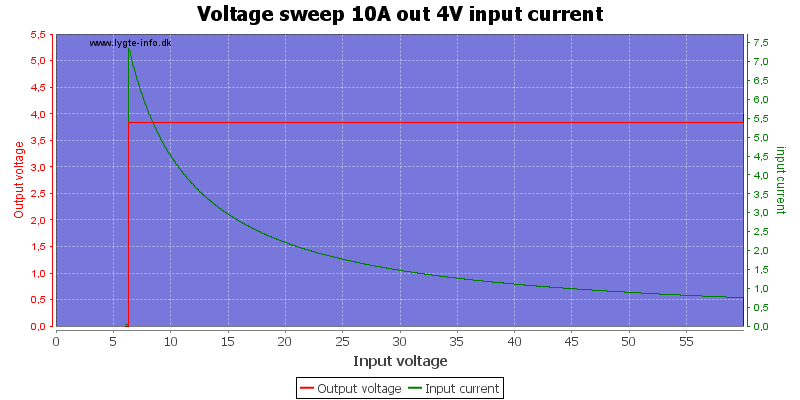


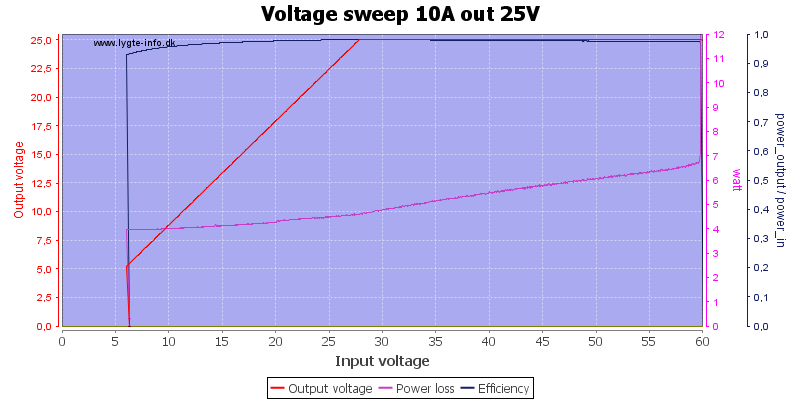
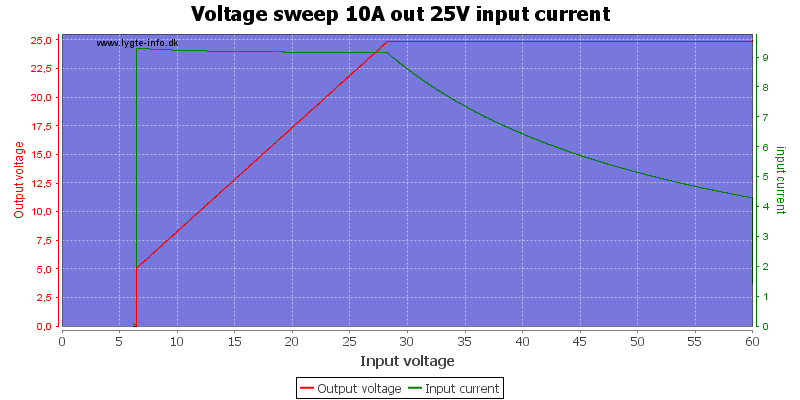
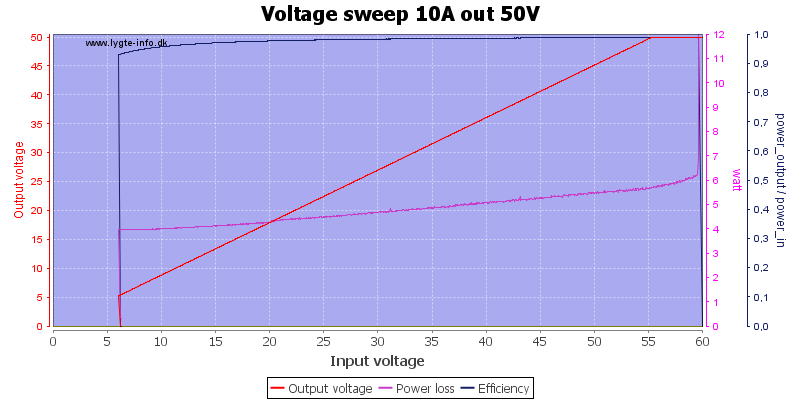
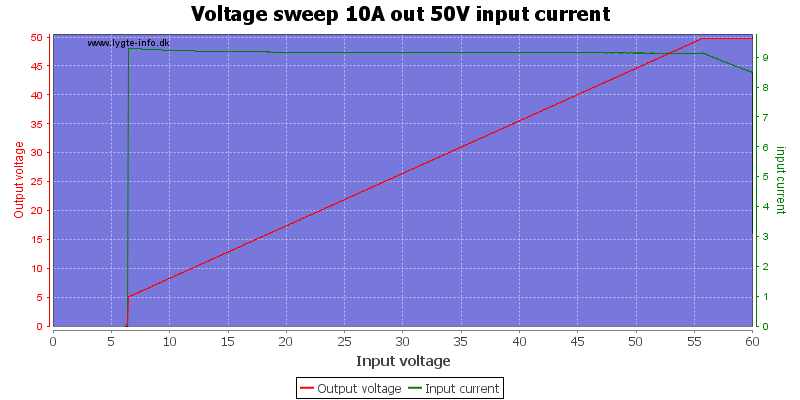
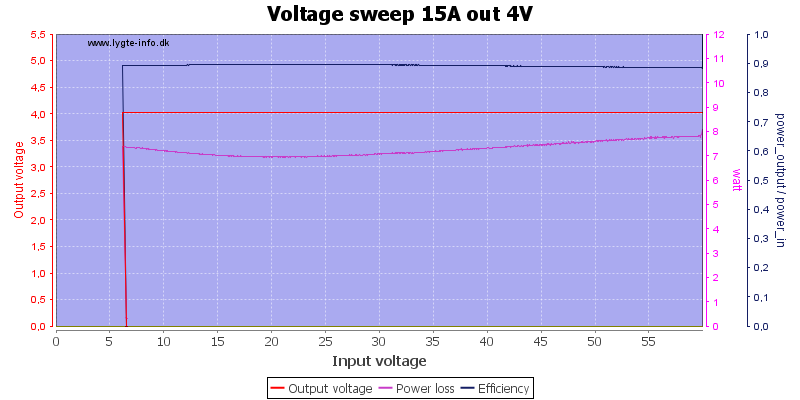
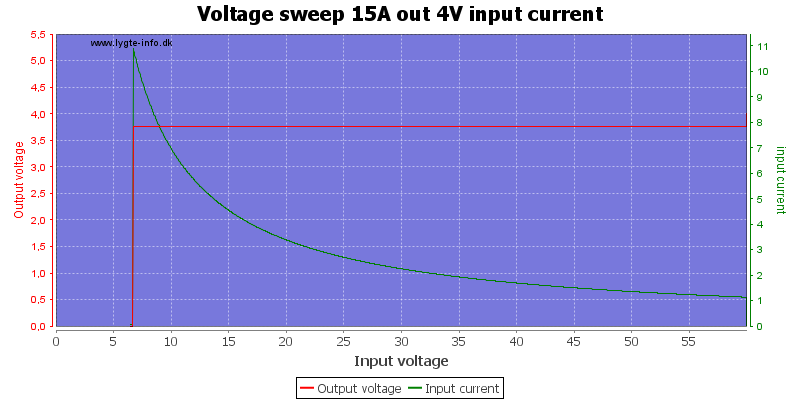

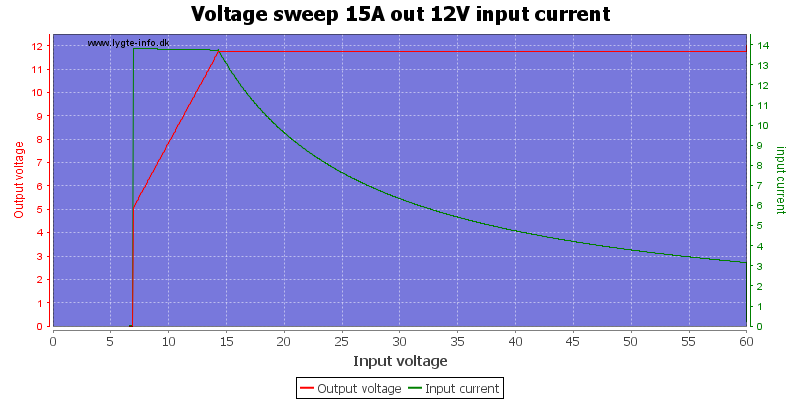
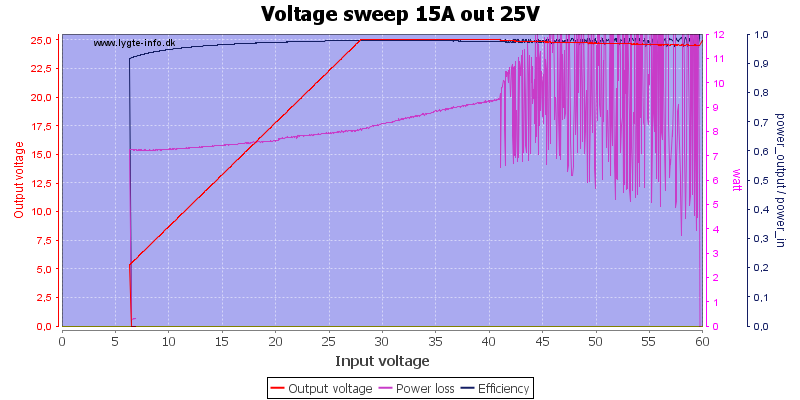
Running very close to the current limit can have problems.
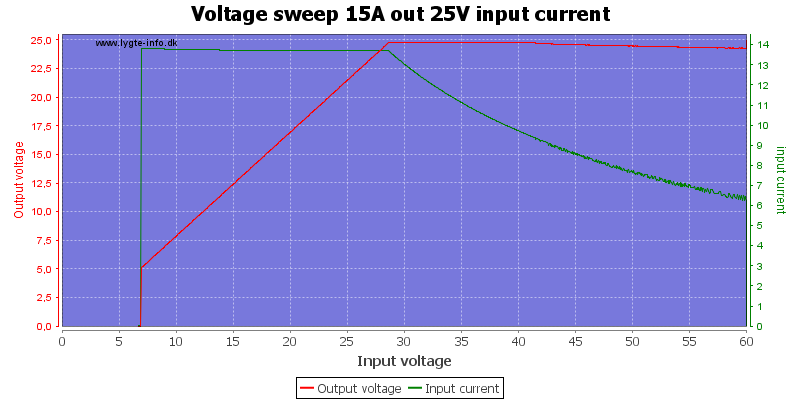
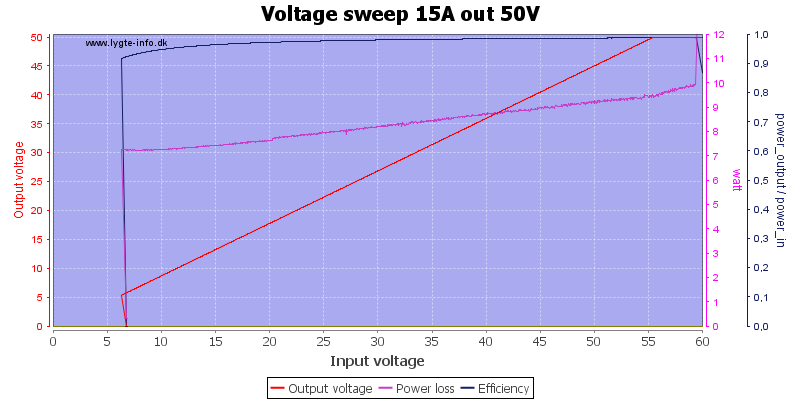
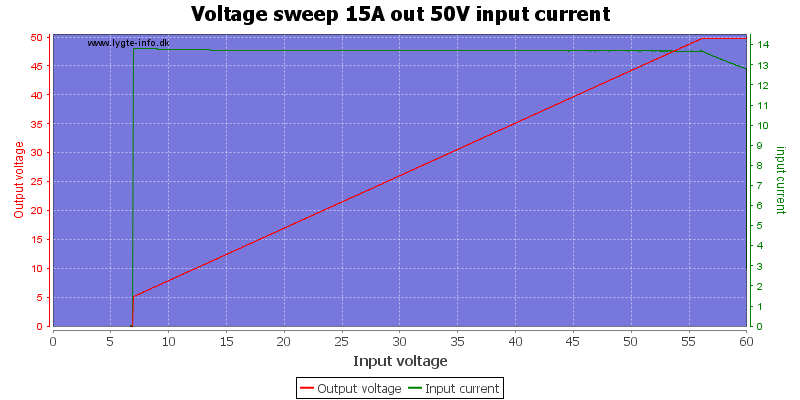
Voltage sweep, no load
Same as above, just without any output current.

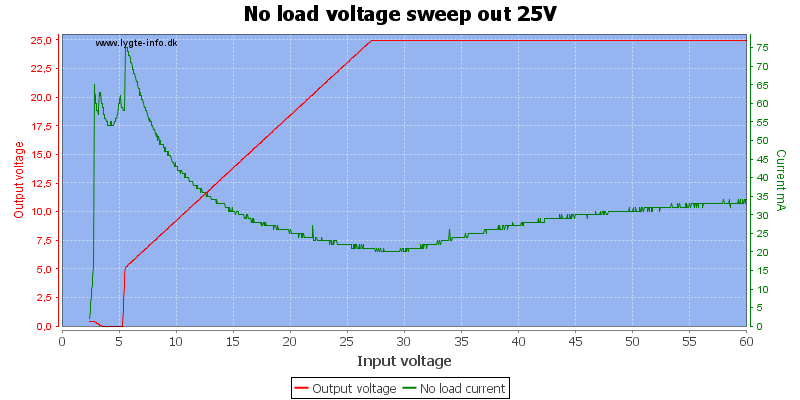
Voltage sweep, output shorted
This power supply has a constant current mode, these two charts show how it works at different input voltage.
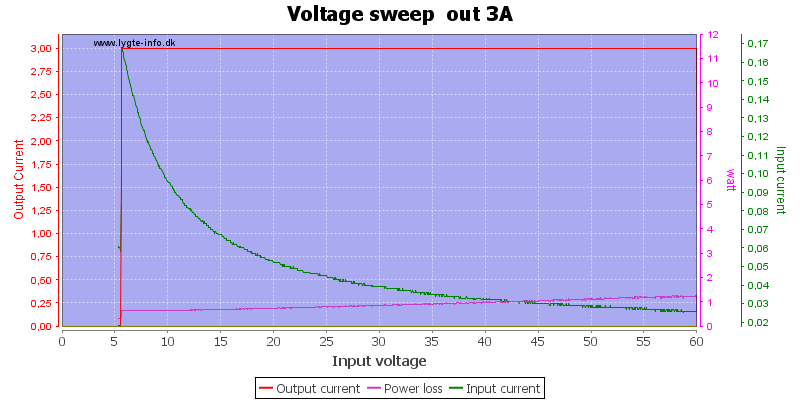
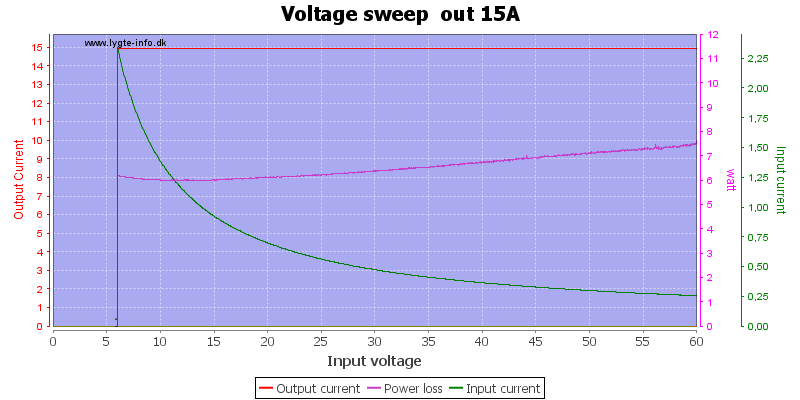
On/off charts
How do the output behave during on/off transitions.
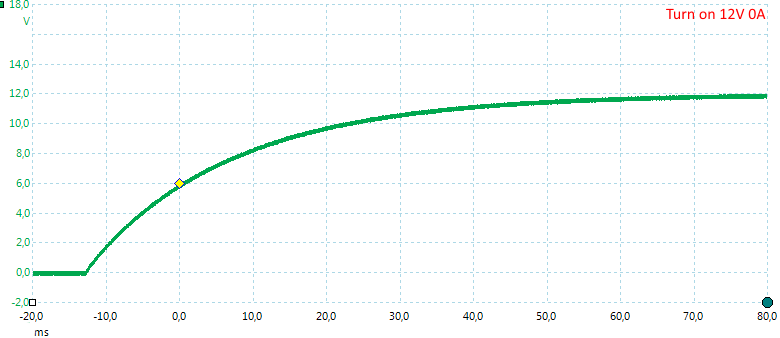
When pressing the on/off button to turn output on the voltage is "slowly" regulated up to the selected voltage, here without load.
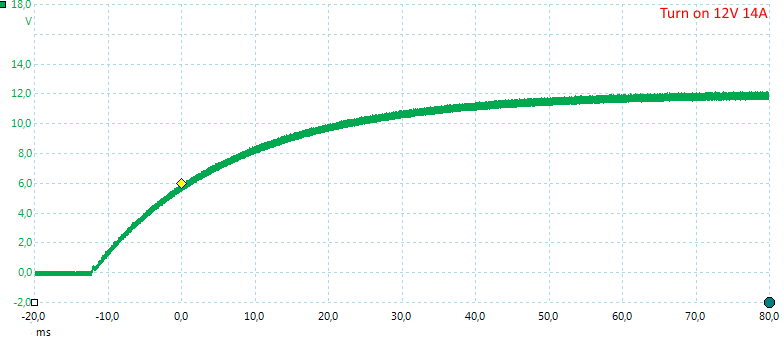
And here with a load.
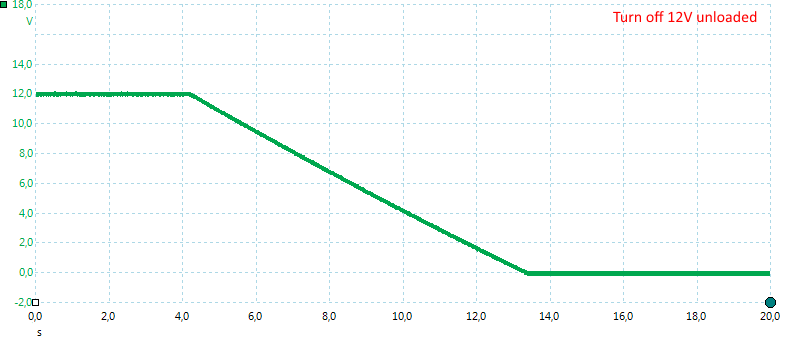
Pressing the o/off button to turn the output off is a bit slow when output is unloaded, the output capacitors maintain output voltage some seconds.
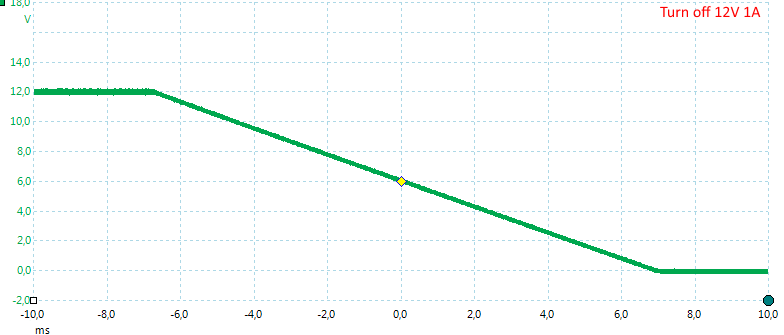
With a 1A load the time is fairly short.
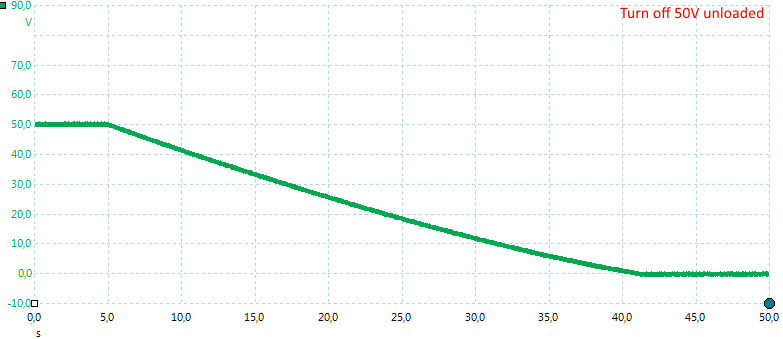
At 50V output it takes more than 30 seconds before the unloaded output has dropped to zero.
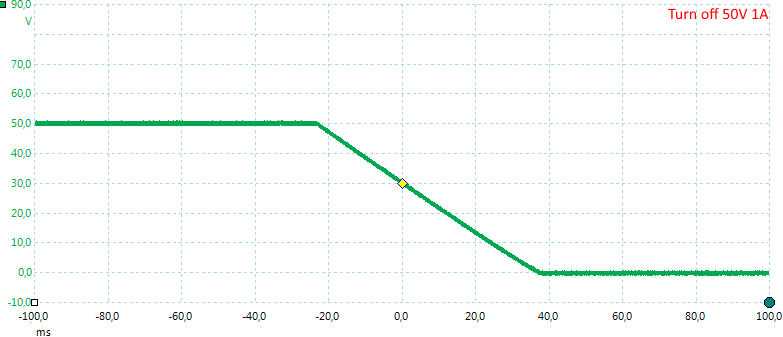
Again, with a load it happens in a fraction of a second.
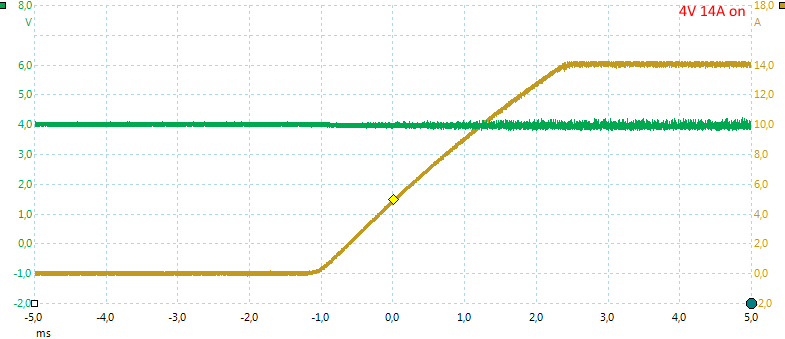
Going from zero load to 14A load do not change the output voltage, but it will increase the noise.

At 12V there is less noise.
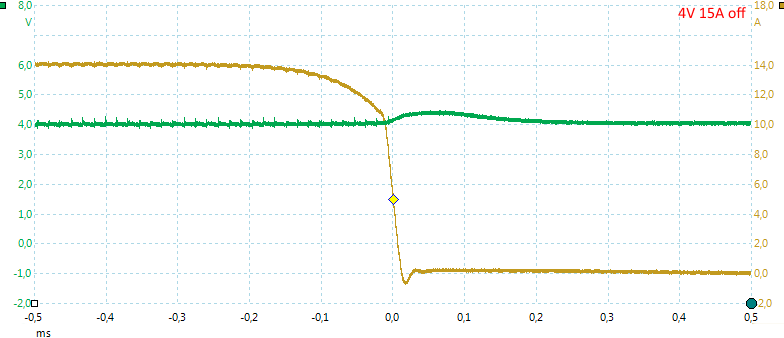
Turning a 15A load off at 4V will increase the output voltage with abount 0.5V for a fraction of a second.
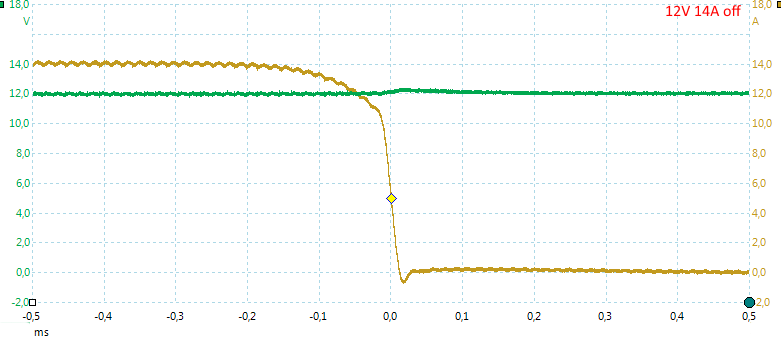
Same at 12V
Noise charts
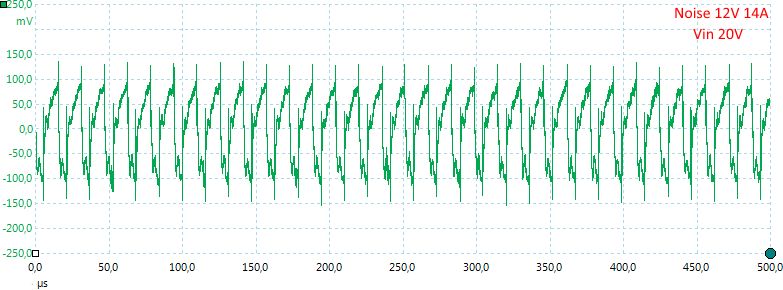
There is some noise in the output.
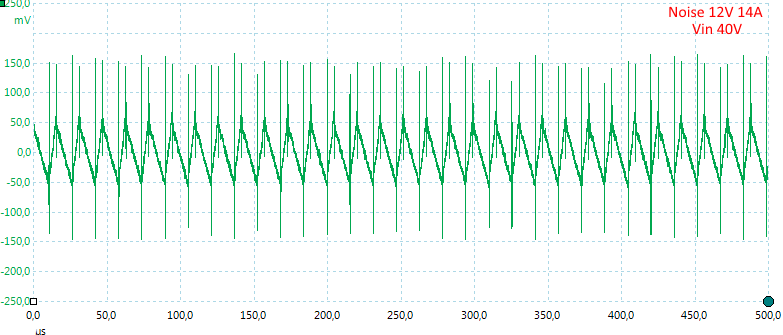

The shape depends on the input voltage.
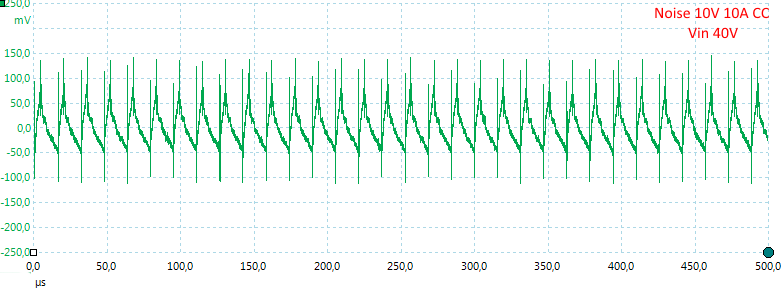
Yhe noise is about the same in constant current mode.
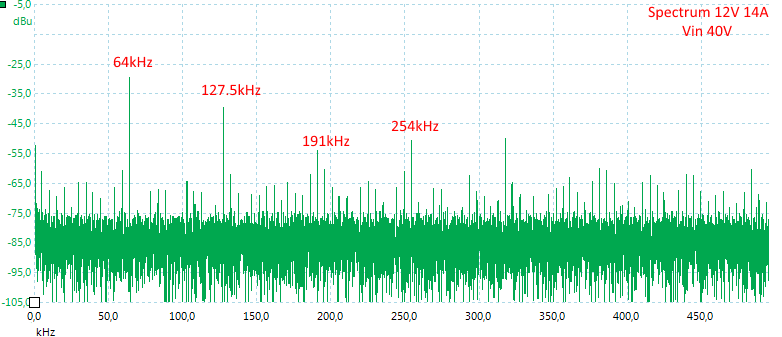
Analyzing the spectrum shows that the circuit is switching at 64kHz (That can also be seen on the charts above).


























































































